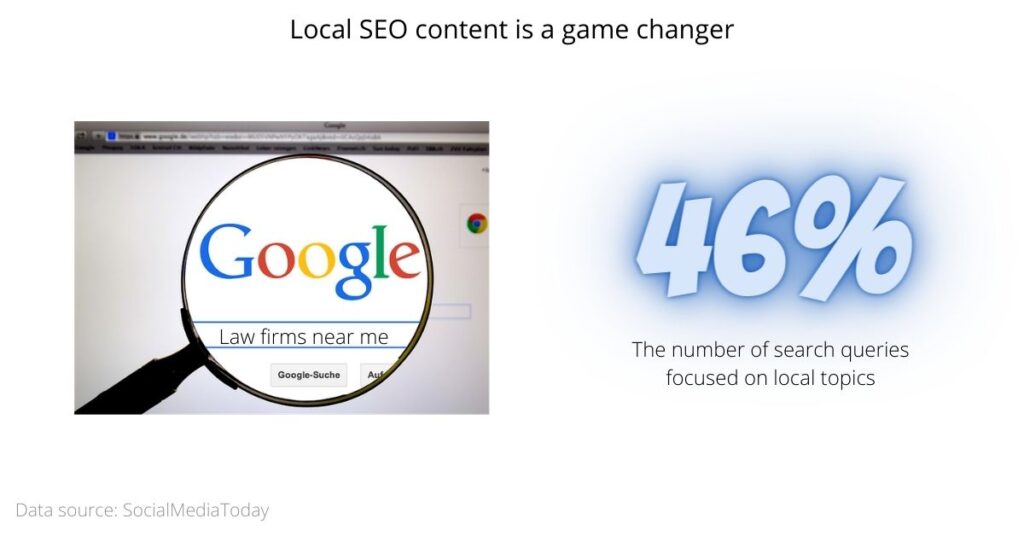Does your business have a blog or an SEO strategy?
If not, you’re not alone.
About 7 in every 10 businesses don’t use any SEO strategy, according to a survey by The Manifest. That means most businesses today operate without properly tapping into the power of content marketing.
However, it’s not just about having an SEO strategy, it’s about having one that works.
Content marketing is often the way to go for small businesses aiming to increase online visibility, but it doesn’t always work out as planned.
Many small business owners have complained over the years that their blogging strategies are not living up to expectations, resulting in thousands of dollars and countless hours down the drain. Most of these failures can be traced back to poor SEO practices.
How can you ensure your blogging is SEO-friendly?
In this article, we’ll be discussing 5 SEO best practices for high ranking small business blogs.
Let’s get started.
1. Proper Keyword Research
Do you optimize your content for keywords?
With poor keyword choices, your business’s online visibility won’t be the best, and customers simply won’t be finding you.
Picture this: Say you want to buy a new phone, but you don’t have an exact idea of what you really want. The first thing you’ll probably do is go online and type in something like “best phone reviews” to find some inspiration.
Now if your eCommerce store doesn’t have content with keywords geared to this search phrase, search engines will be taking these leads elsewhere.
In a nutshell, keywords are like the compass of the internet. They enable search engines to direct niche-specific traffic your way and increase your business’s visibility on the internet.

Proper keyword research is therefore important if you want to outrank websites you’re competing with.
Before you or your writers write an article, you’ll have a general topic in mind, and you can feed that in keyword research tools like Ahrefs to generate possible keyword phrases.
What you’ll be most interested in here is which keyword results are ranking high even for websites with low domain ratings.
The competition for a keyword is also an important consideration.
If a certain keyword like say “new phones” is overly competitive for your liking, you can find new long-tail variations by adding a few important words and seeing how the new phrase performs on Ahrefs.
2. Internal Link Building
How do internal links benefit blog posts?
According to an Aira survey, 62% of respondents believe organic search rankings are greatly influenced by link building.
Internal links, i.e. those connecting separate blog posts on your website, enable Google and other search engines to better find your blog.
Without internal links, algorithms won’t be able to crawl and structure your website properly.
What’s more, you’ll be losing out on retention time, because internal links give your visitors more reasons to stay on your website by dangling other valuable content in their faces.

Speaking of valuable content and great websites, here’s an interesting article I wrote a while back on website building tips for making a great first impression on your customers.
Content is only part of the SEO battle, and you can also learn other important tips for an all-around SEO-friendly website.
See what I did there?
This is an example of an internal link.
Good internal links should be natural and related to the content you’re talking about. If you don’t have good content depth to link to, you should consider creating more around the same keyword variation.
The general rule of thumb to avoid link stuffing is about 2-4 internal links per every 1,500 words.
3. Optimized Image Creation
Are images part of your blog posts?
The absence of images means lengthy blog posts that overwhelm your readers with large chunks of text that seem to go on with no breaks.
Without images in your content, you’ll also be missing out a lot on organic traffic, going by the findings of an Impact survey.
The survey states that you can boost traffic by more than twice by only republishing old blog posts with new images and content.
Therefore, image optimization is one to prioritize among these 5 SEO best practices for high ranking small business blogs.
So how can you create optimized blog post images?
I’ll recommend a couple of amazing tools I personally use when creating images for my articles.
The first is Canva, which is a cloud-based design tool that you can basically use with a minimal learning curve.

Although there’s a premium option, you can sign up for a free account. I recommend the Facebook Ad resolution (1200 x 628 px) when creating a new design, so you can optimize your images for mobile and social media.
Then you can straight away create your own custom images using pre-existing templates and icons, by narrowing down what you’re looking for in the search panel of the new design field.
Image options can be limited on Canva. Therefore, you can use Pixabay and the Unsplash website, for example, to find royalty-free stock images to upload to Canva for editing.
Remember to compress your images as well to give your web pages faster loading times, which you can do by choosing the “JPG” download option on Canva instead of “PNG.”
4. Good Blog Design
First impressions are everything.
According to a ResearchGate survey, 94% of website appeal is a result of design-related factors which affect first impressions.
A poor website or blog layout may be putting off your viewers from even going beyond the first paragraph because of eye strain, and general unappealing structure.
So your blog posts may not be doing too well, not because they lack quality, but because they don’t look easy on the eye and readers don’t even give it a chance.
To correct this, you may want to start by choosing an appealing font for your content. A beautiful typographic style, effortlessly legible across mobile and desktop, is desirable.
Aside from prioritizing readability, consider consistency as well.

If you’re using different fonts across blog posts, worse yet across the same article, you’re sending mixed signals and not creating an identity.
The images we talked about also go a long way in increasing website appeal.
Specifically, a good website design should include an image for every 150-200 words to break the monotony of long content.
There are a lot of factors and nitty-gritty that influence good web design, which is why you should invest in professional web design as opposed to going it alone.
Our team will get you a nice and unique template to accelerate the appeal of your blog posts. We’ll get you an excellent blog layout to give your readers a reason to stay and learn more.
5. Local SEO Blogging
Why should you be concerned about local SEO?
Because 46% of Google searches today are queries focussed on something local, going by a SocialMediaToday study on Local SEO trends. What this means is that close to half of your market is interested in what’s happening on the local scene, and so should you.
The primary goal of your blogging is probably to generate buzz for your business, and direct enough traffic your way for niche-specific leads who are likely to buy. That becomes even more important when you’re targeting a specific locality.
Local SEO content creation is a great way to tap into a target market.
An excellent way to do that is by using local news stories or events relevant to your niche for inspiration for your blog posts.

If you have local causes or charities you’re supporting, you should also write content around them from time to time. Local content is a great way to directly relate to your customers and speak to them on a more intimate level.
Additionally, you can also boost your local SEO ranking by using local keywords more frequently. That means keywords often used by local customers searching for products or services similar to yours.
For example, if you’re a law firm offering legal services, keywords such as “legal services near me,” should be important. It’s crucial as well to vary your keywords to avoid keyword stuffing
Google’s Keyword Planner is a great tool for filtering location-based keywords, so you can know what works best in your region.
With a list of relevant local keywords, you can better finetune your URLs, landing pages, and meta content to accelerate lead generation.
Conclusion
Are your blog posts not generating enough traffic?
It could be because you’re using highly competitive keywords. For this reason, higher-ranking websites are hogging all the spotlight, and your posts are not even visible to your market in the first place.
Perhaps, you’re not quite as experienced with proper internal link building, and consequently, your SERP ranking is paying the price.
Under-performing blog posts can also be traced back to poor image optimization, which leads to higher website loading times, and poor web design in general.
With these 5 SEO best practices for high ranking small business blogs we’ve discussed today, you can better work towards achieving your traffic goals.
If you’d be interested in outsourcing your web design needs to established professionals, our team of WordPress developers will be more than happy, and qualified, to build a great layout for your business blog.
Click here for more details on how we can help you make SEO-friendly blog posts that rank.
We’ve partnered with many small businesses just like yours over the years, offering effective and proven digital marketing strategies.



